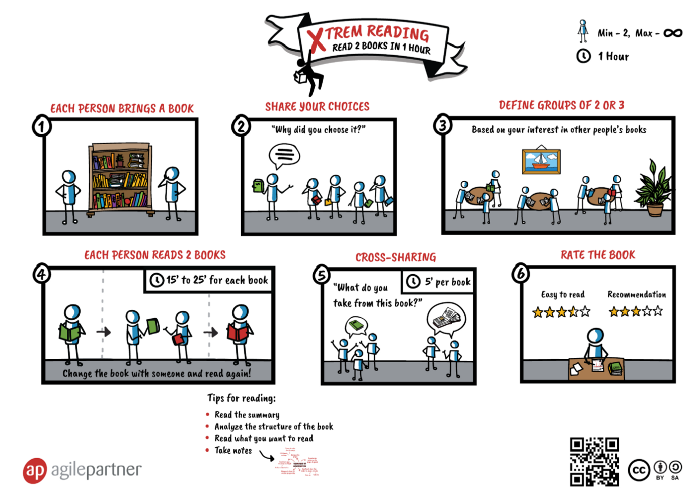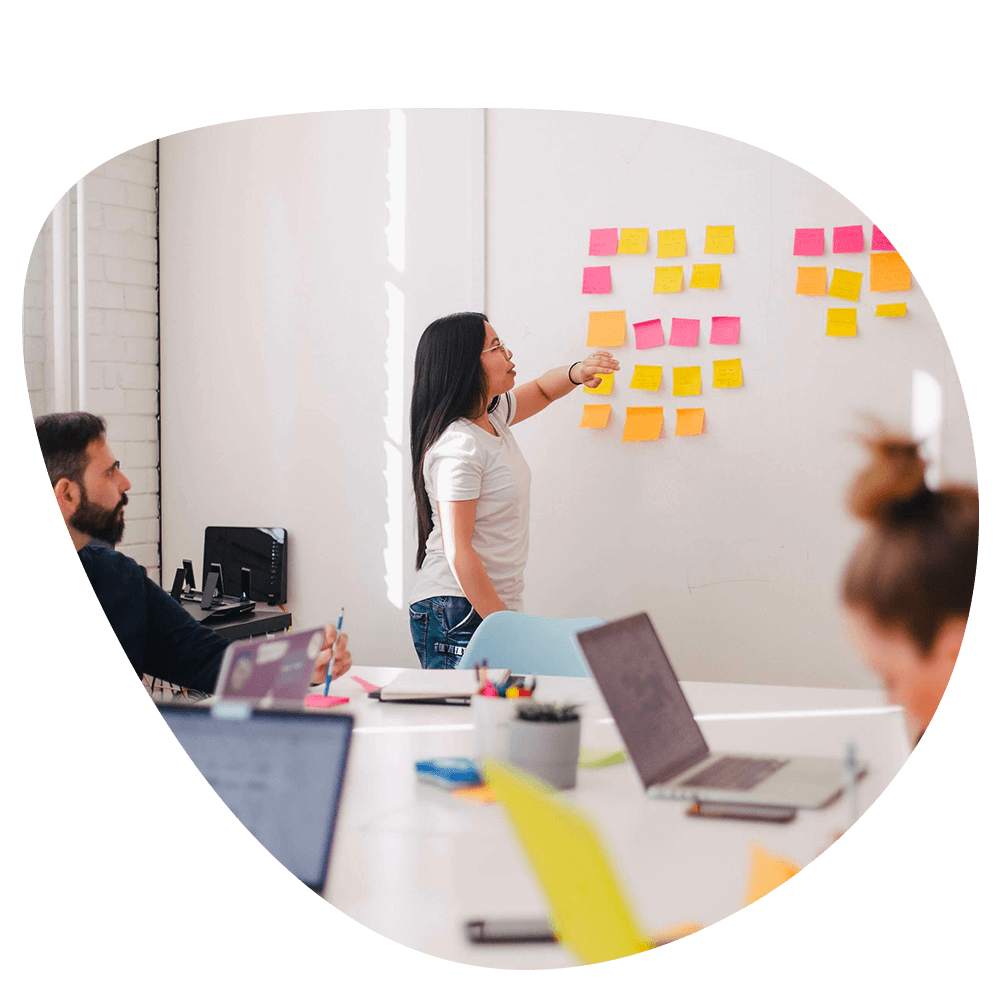Be Agile
Towards a learning organization and beyond
25 Jul 2019
by
Yoan Thirion
Learning organization
A learning organization is a group of people who are continually enhancing their capabilities to create what they want― Peter M. Senge, The Fifth Discipline: The Art & Practice of The Learning Organization
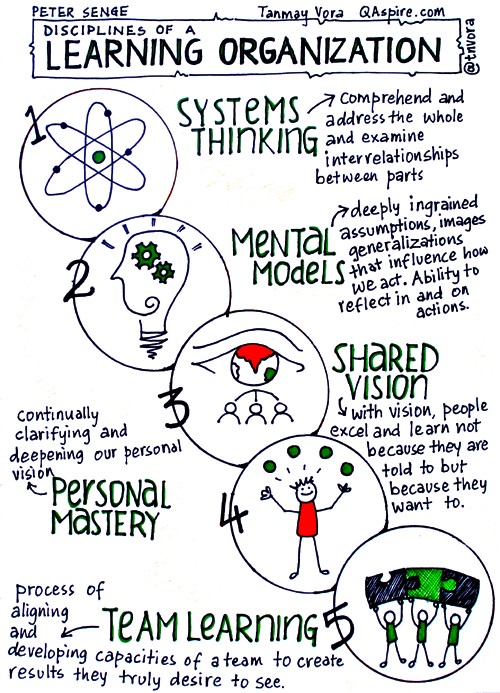
The five disciplines of learning organizations presented on the picture above are interrelated. Each discipline cannot stand independently.
Team learning
The only sustainable competitive advantage for a company is to learn faster than the competitors -Arie de Gues
According to Peter Senge, to accomplish excellent functional team dynamics, team-learning is a primary importance. It is crucial for the teams to consider others as team members instead of rivals.
It is the first step to set up dialogues wherein people dare to be vulnerable and express their real personality. The working environment should be safe where honest mistakes are forgiven.
Team Learning happens when teams start 'thinking together' by sharing their : experience, knowledge, skills and insights with each others about how to do things better.
How to stimulate team learning ?
Leaders must promote and support this learning by creating a conducive environment.
Organizational leaders need to lead by example so they need to share their own experience, knowledge and skills as any other organization member. They need to show their interest for any learning experience.
Examples of learning experiences
In your organization, you can initiate this culture of learning by organizing internal events like :
- Brown bag lunches / lunch & learn - Learning opportunities that are supplied during the employees' lunch break. It could be a formal presentation or informal discussions about a given problem for example.
- Book club-A space to discuss/exchange about a given book.
- Open Space Technology - A method for structuring conversations and conferences. With this method, groups of 5 to 2,000 participants can come together and work together. The characteristic of the method is the openness put at the same time on the content but also on the form. Participants are invited to work together on an important and complex theme.
- Lean coffees - A structured, but agenda-less meeting. Participants gather, build an agenda, and begin talking. Conversations are directed and productive because the agenda for the meeting was democratically generated.
- Lightning talks - a very short presentation lasting only a few minutes. Several lightning talks will usually be delivered by different speakers in a single session.
- Workshop - Organize learning/hands on workshops in which 1 team can share its experience on a given topic to the rest of the organization.
- Organizational retrospective -An opportunity for everyone in the organization to inspect the organization and create a plan for improvements to be enacted.
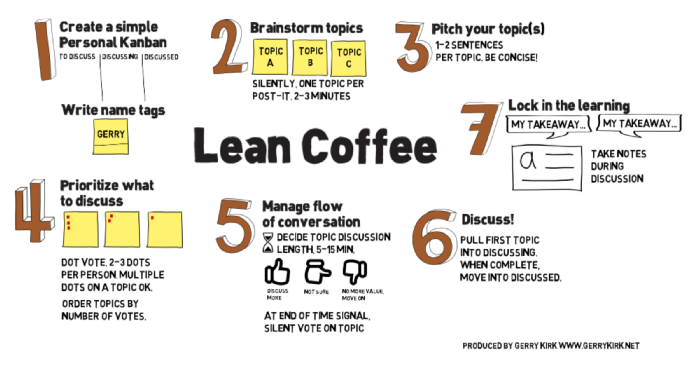
Our own tools at Agile Partner
At Agile Partner, we have created our own tools for team learning :
Xtrem Reading
A technique that allows people to read 2 books in 1 hour in a collective way. The format has been created to stimulate the collective intelligence and learn new stuff in group.
Xtrem Tech Watch
A technique that allows people to discover new topics collectively. We use this format for our technological watch. At the end of the exercise, each group of 2 or 3 share their discoveries to the rest of the audience just like in a lightning talk. Combined with the usage of a technology radar it is a really powerful tool.
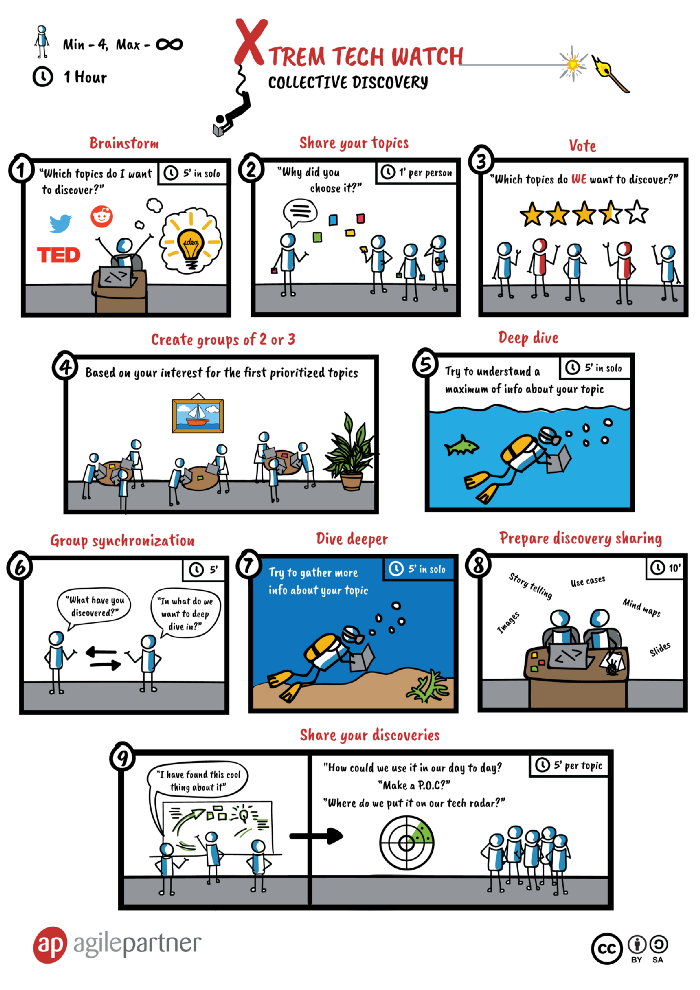
Craft challenges
We love to use gamification for our day to day coaching. To share the craft culture (culture of technical excellence) for example we have created a game called "craft-challenges". The game is a powerful tool to spread knowledge and build new capabilities as well.
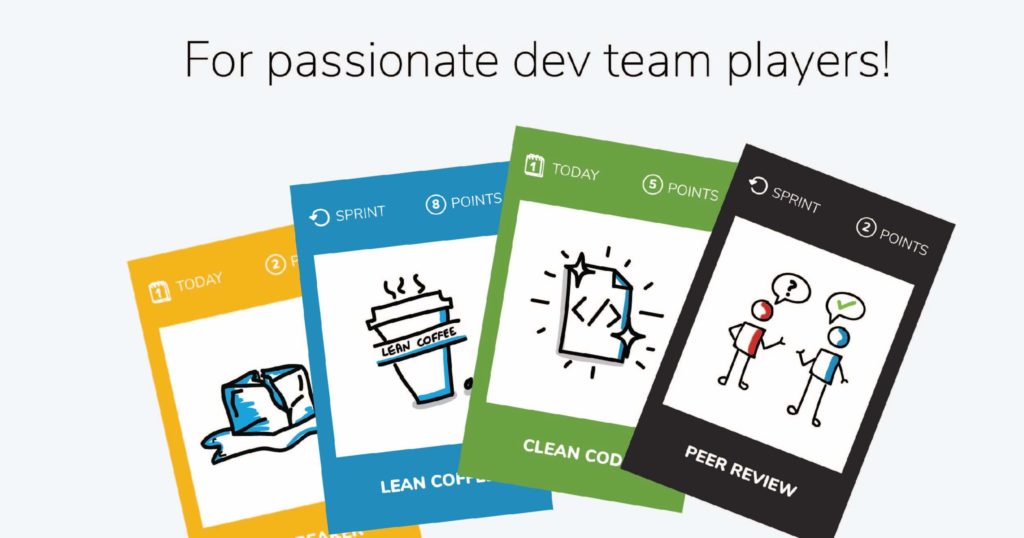
Boost your internal events
At Agile Partner we have created a role play game we use during our brown bags to help our colleagues to improve their facilitation and speaker skills.
Conclusion
Starting your journey to the learning organization by stimulating team learning is a good place to start. If you set one discipline, the interrelation between them will enable the organization to identify complexities and opportunities both internal and external to the organization.
Need help to become a learning organization? Want to experiment one of our tools?
